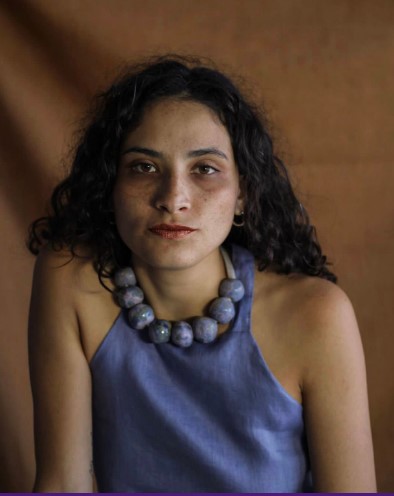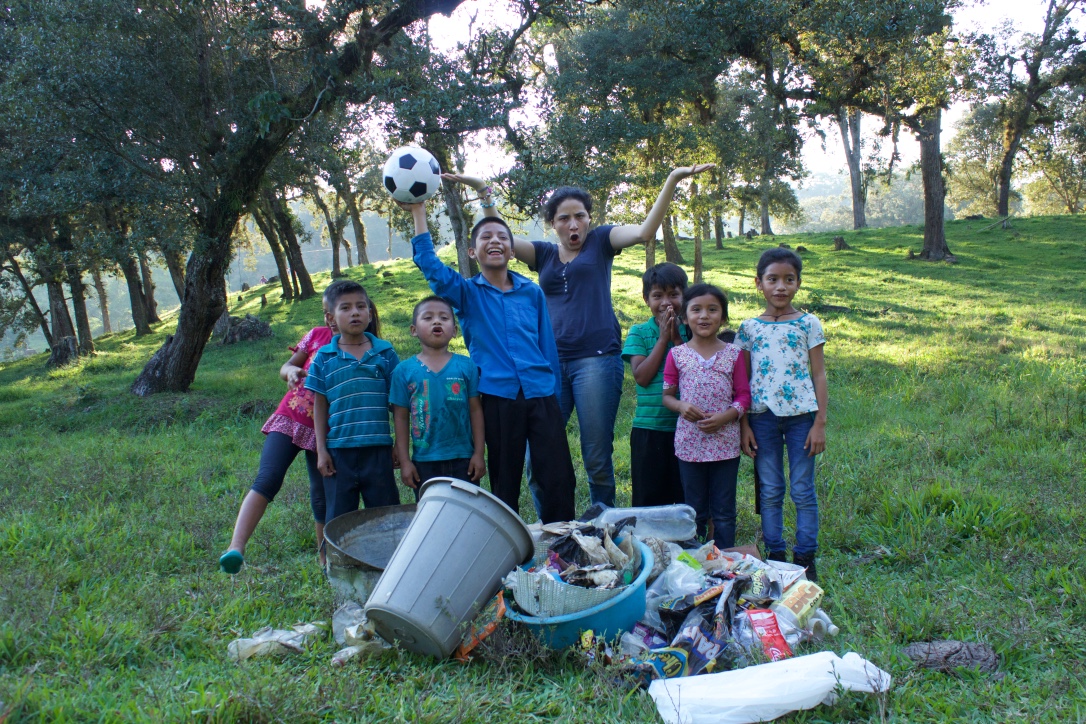TCU welcomes three new PhD students in Latin American History
Earlier this month, TCU welcomed a new class of graduate students to the History Department including three new PhD students in Latin American History. Sofía Gómez Pichardo, Leonel Rodriguez, and Meghan Scott-Chaber have shared in their own words what influenced them to want to study Latin American History at TCU.
|
|
 |
 |
 |
|
"I believe that the experience of studying history offers you a new perception of what life could mean."
Traditions, communities and culture have always captured my curiosity, leading me
to perceive various realities by observing the narratives that have unfolded in my
surroundings. I was born in Mexico City but grew up in Morelia, Michoacán. Later,
I spent five years studying for my bachelor’s degree in Law and graduated from ITESO
University located in Guadalajara, Mexico in 2022. I have found different connections
with history throughout the projects that I have been a part of. For example, from
2017 to 2018 I was part of the Indigenous Realities Group at the Ignatian University
Center, where I worked with the Tzeltal community which keeps having resistance against
the state. Soon thereafter, I was allowed to experience other diverse cultural truths
by being a part of the Department of Community and Culture at the Latin American House
in London, England in 2022. In 2020, I participated in the Museums and Community project,
collaborating with the art installation “Spiritual Art” by Mathias Goeritz at the
Cabañas Museum. Thanks to the research I conducted during this time, I solidified
the linkage that history has in the relation and connection between public spaces
and communities. As a lawyer, I have wondered about the function of cultural institutions
such as museums, intending to try to understand the significant role that this particular
organization plays in society. Some aspects that have enhanced my interests the most
are the spiritual practices that Latin American communities embody, their authentic
form of creating music and dances, the important presence of food within their customs,
and the mysterious and precise structures and symbols that indigenous groups have
formed in the past. I must point out that without the support of TCU and this generous
opportunity given me to keep studying, I would not be able to further my analysis
of history nor continue answering my doubts about my identity as a member of the Latin
American community.
 |
I was involved in Participación Activa Esudiantil (PAE, Active Student Participation), a cultural and artistic community at ITESO University in Guadalajara, Mexico. We were engaged in transforming the narratives of the 2018 Central American migrant caravans that moved from southern Mexico with the goal of arriving to the U.S. border. |
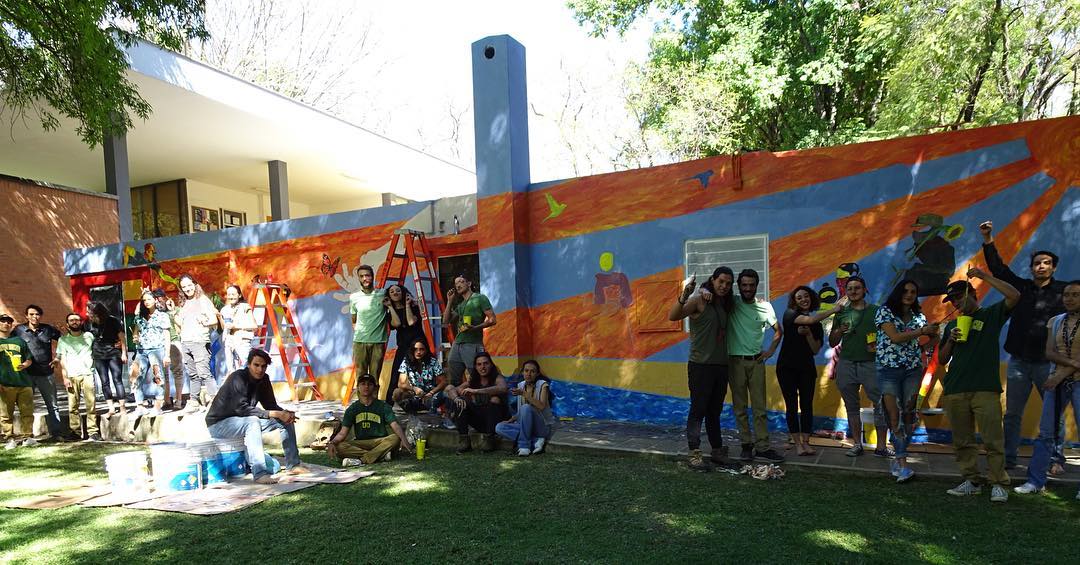 |
With the participation of several community members, we were able to display the relevance of the effort of the people trying to catch “La Bestia” (“The Beast”), the train Central American migrants rode in hopes of seeking a better opportunity in life. |
 |
This is an image of the mural after it was finished. The garden in front is constantly used for the university community to enjoy, as well as bring various matters to light, such as the mass kidnapping of the 43 students from Iguala, Guerrero, Mexico, and the Zapatista uprising. |
 |
At the same time, we had the opportunity to bring other walls on campus to life and therefore represent the cultural diversity occurring in Mexico, focusing on the Wixárikas ethnic group. |
|
|
As a community, we were able to represent the significant purpose of the Wixárikas cosmological way of perceiving life, and so another special and picturesque mural was created. |
|
|
I participated in the Indigenous Reality Group from the Ignatian University Center. We traveled to Bachajón, Chiapas and worked with the Chilón community. As the days passed, we played with the children there and tried to show the importance of protecting the environment through various activities such as picking up the littler around us. |
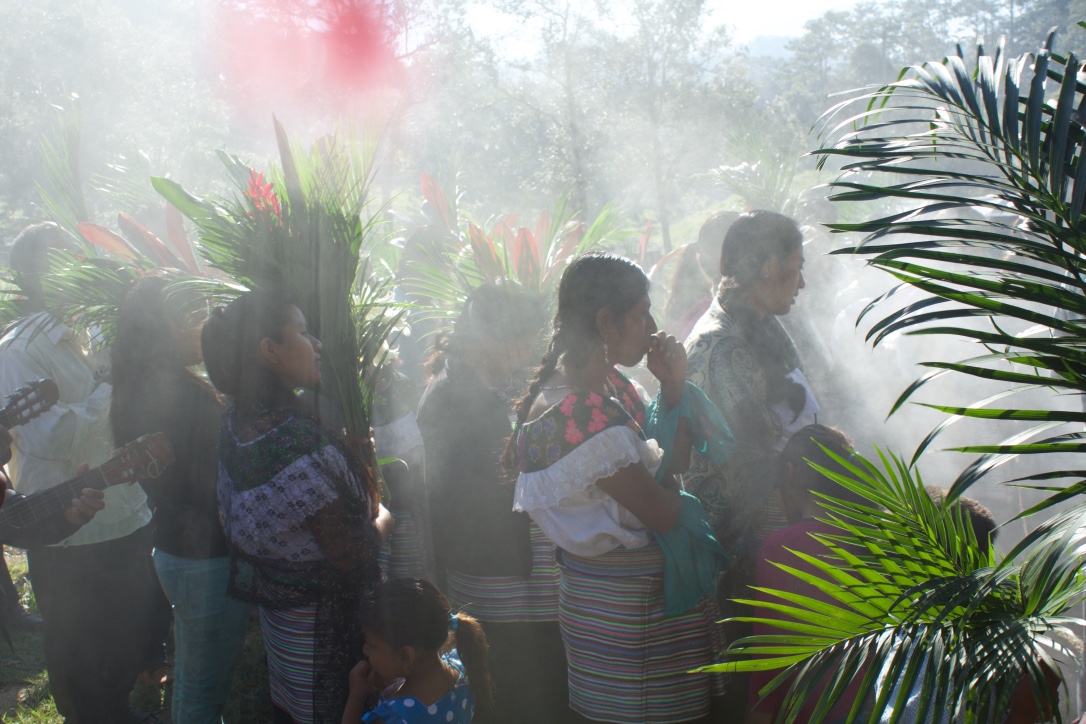 |
It was a very challenging experience because the communication was a major barrier. The Chilón people did not speak Spanish, and we did not speak Tzeltal or Tzotzil. Despite this, we connected through laughter and adventures throughout the jungle. |
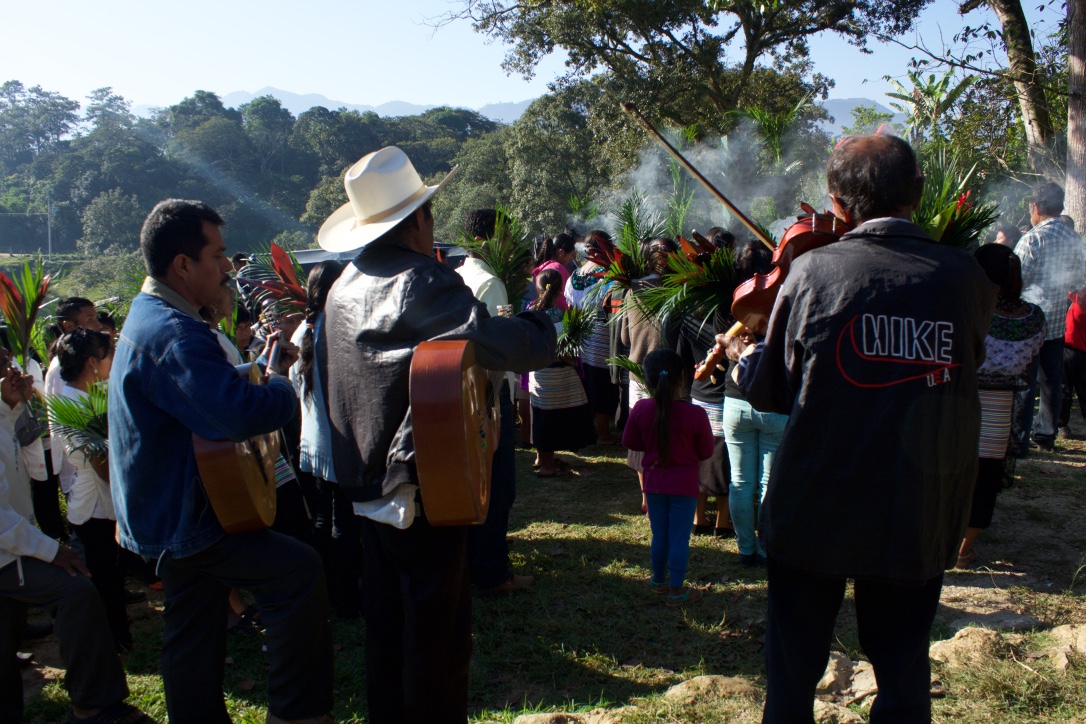 |
We joined their daily civil resistance activities and participated with the Tzeltal community in their ceremonies performed during Holy Week. |
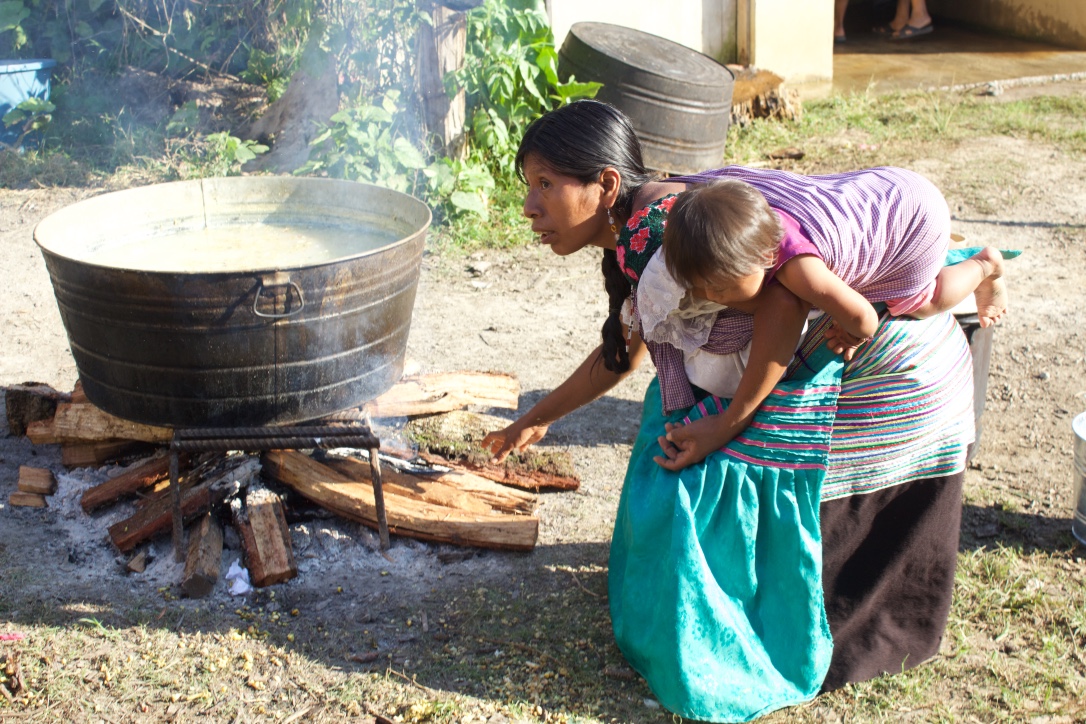 |
Simultaneously, we worked hand in hand with the women of the community, collecting flowers and honey that would later be used for making soap. |
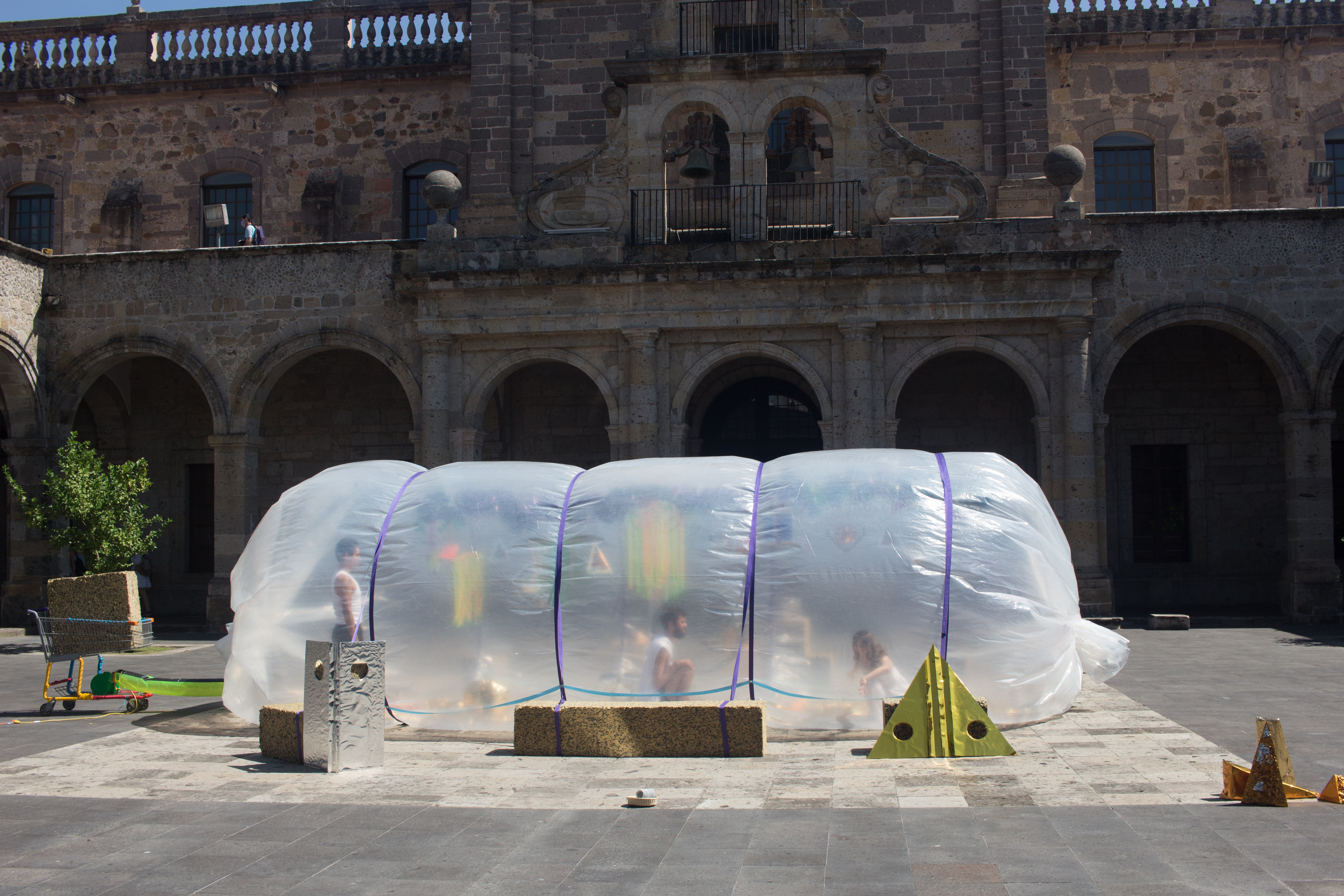 |
In 2020, I participated in the Museums and Community project, an effort that researched the relationship between the people who resided around the Cabañas Museums, the most important cultural institution in the state of Jalisco, Mexico. Our project was based on collecting passerby sounds and interviews that encapsulated the narrative of the neighbourhood. While the performance was taking place, the audio would guide the spectators through snippets of the interviews and the experiences of the people around, giving them a better sense of the surroundings. |
|
|
I collaborated on the exhibition, “Spiritual Art” by Mathias Goeritz. As part of the objectives of the installation, we sought to invite the community to participate in the activities at the museums, generating reflection among the audience. |
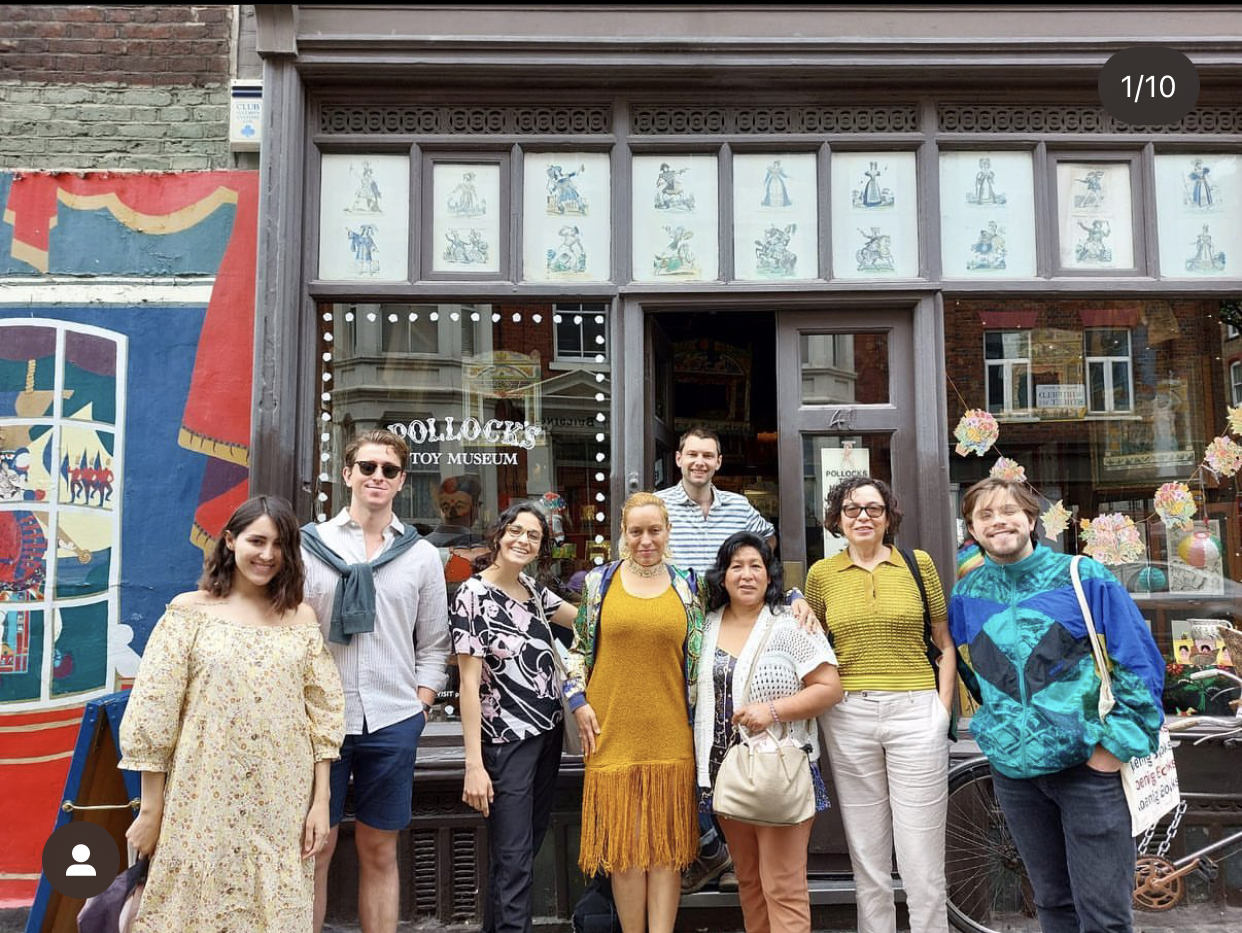 |
In 2022, I assisted Naomi Zaragoza, the Director of the Community and Culture Department at the Latin American House in London, England. Here we are outside the Pollock’s Toy Museum with part of the Latin American community that wanted to join the tour and get to know more about their story. |
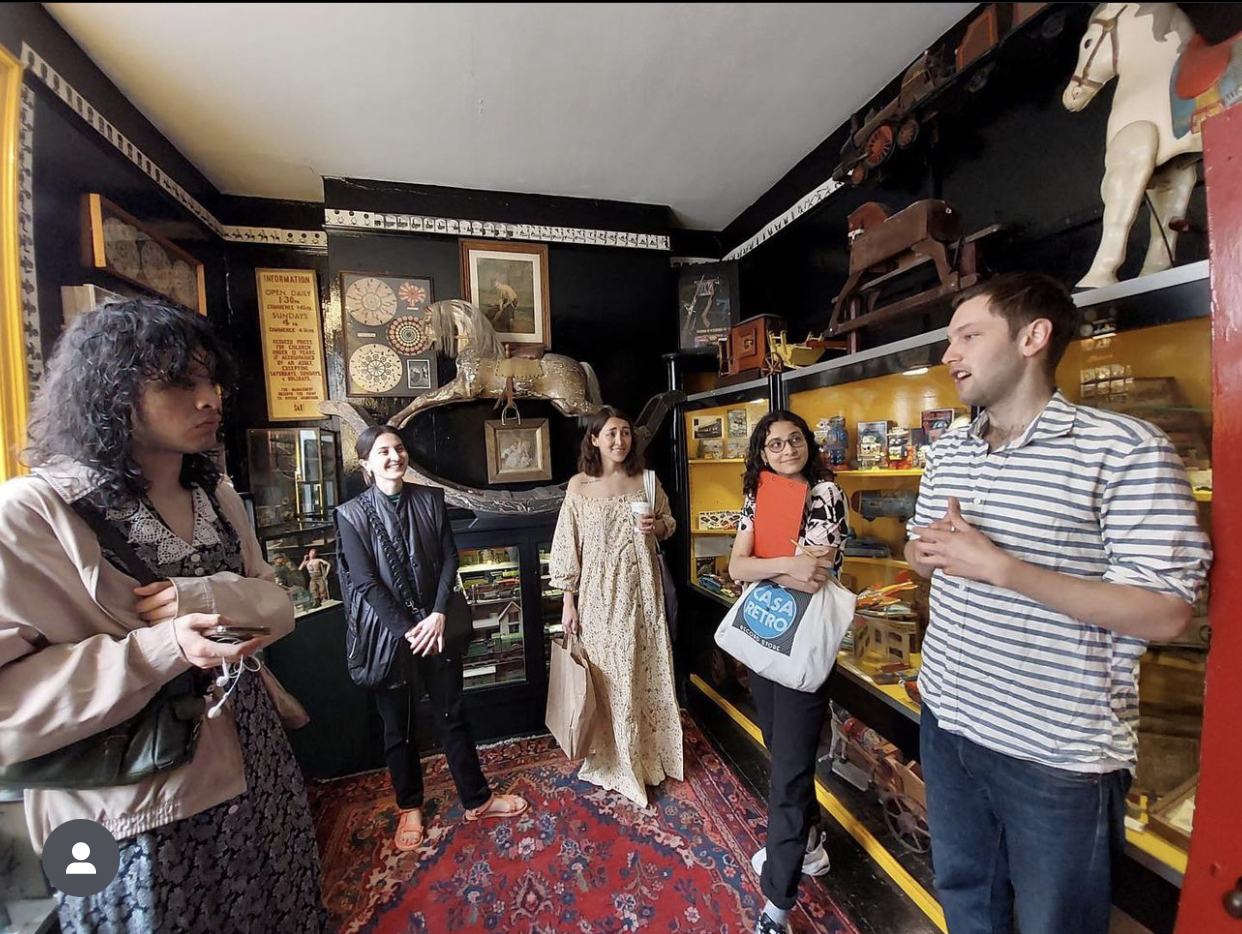 |
Part of my responsibilities was to interpret the tour into Spanish for the participants who did not speak English so as to make their experience a more comfortable one. People from Peru, Brazil, Venezuela and Mexico joined the activities. |
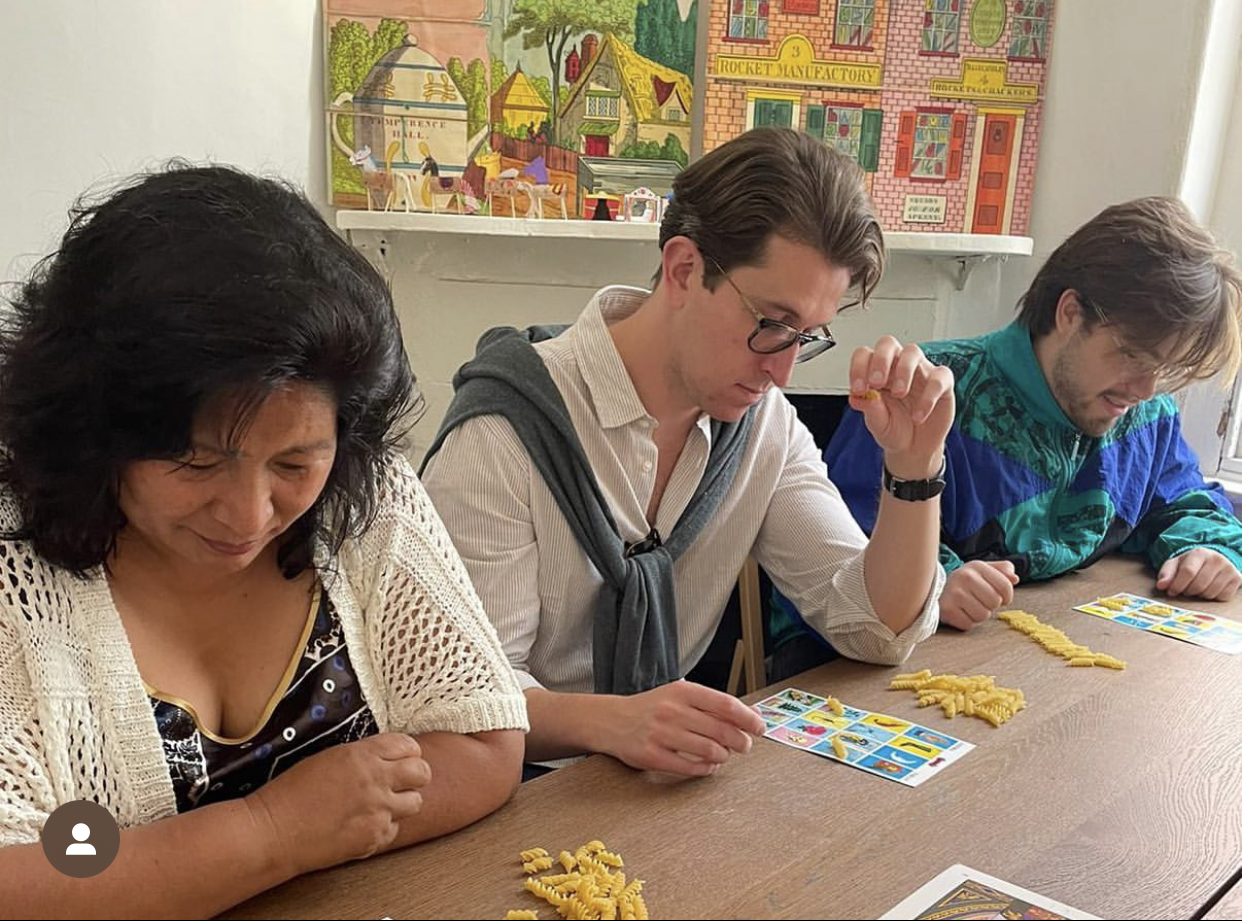 |
At the end of the tour, we played Mexican lottery while we chatted around different games that each of us had played as children and missed from our home countries. |
PHOTO CREDITS
1. Photo taken by ITESO University.
2. Photo taken by PAE, Participación Activa Estudiantil.
3. Photo taken by PAE, Participación Activa Estudiantil.
4. Photo taken by PAE, Participación Activa Estudiantil.
5. Photo taken by Sofía Gómez Pichardo.
6. Photo taken by “Totzpa”, Martha Esquivel.
7. Photo taken by “Totzpa”, Martha Esquivel.
8. Photo taken by “Totzpa”, Martha Esquivel.
9. Photo taken by “Totzpa”, Martha Esquivel.
10. Photo taken by Sofía Gómez Pichardo.
11. Photo taken by Sofía Gómez Pichardo.
12. Photo taken by Latin American House.
13. Photo taken by Latin American House.
14. Photo taken by Latin American House.
“It is a great honor to join a vibrant community of historians who represent different fields of history. It is an important duty to teach and write about the past, which offers valuable lessons to future generations. I look forward to learning more about 19th century Latin America and its connection to Texas"
I graduated with a bachelor’s and master’s degree in History from Texas A&M International University. As a Mexican American from the Rio Grande Valley, my family history is closely tied to the transnational history of the Texas-Mexico borderlands. During my educational experience in South Texas and northeastern Mexico, I’ve visited the battlegrounds of Palo Alto, Resaca de la Palma, Santa Gertrudis, Mier, and Palmito Ranch. My passion for history has grown since I traveled to these historic sites, which reveal different viewpoints from those who fought in the Texas Revolution, Mexican War, American Civil War, and the Second French Intervention in Mexico. The old battlefields, museums, and architectures of rustic border towns arouse admiration for the cultural and political achievements of various peoples from different backgrounds. My travels have expanded my perspective of history which used to be limited due to the textbook curriculum that didn’t include field research in high school. Today, I can independently reflect on historical events and thoroughly analyze primary sources. It takes a disciplined and open mind to write effectively and impartially about controversial topics such as slavery, the Civil War, and Reconstruction. The history of Mexican Americans is complex due to the multiple political movements and military campaigns that have shaped the cultural, economic, and social development of Texas and Mexico. The complex and unique history of my community and state has inspired me to conduct research on the diplomatic relations between Mexico, Texas, the Confederacy, and the United States. My goal is to understand how both sides of the border were impacted by the political turmoil of 19th century Texas and Mexico.
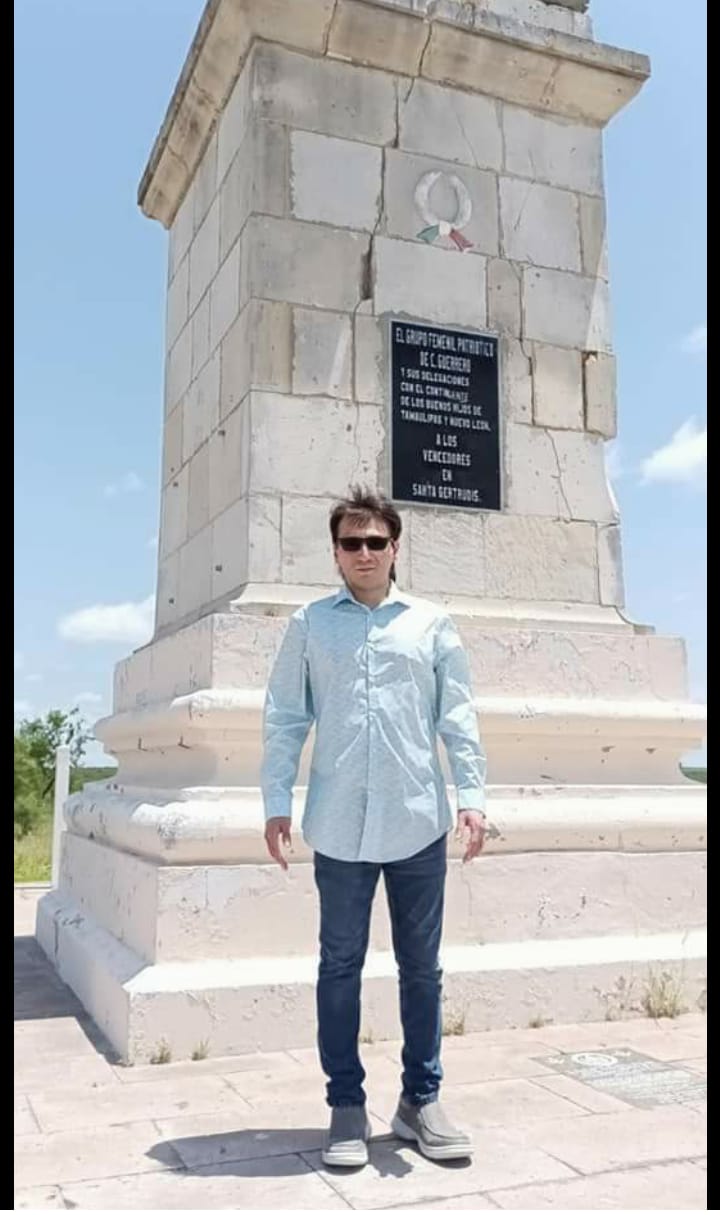 |
Visiting the battlefield of Santa Gertrudis. The historic monument which marks the site of the battle is located near Camargo,
Tamaulipas, Mexico. |
|||||
 |
Visiting the birthplace of General Ignacio Zaragoza in Goliad, Texas.
|
"As the first person in my family to pursue a doctorate, I am honored to be attending TCU in the fall of 2023, and I am eager to learn from such an impressive and accomplished faculty"
I began studying history at the University of Texas at Arlington in 2017. I received
my bachelor’s degree in 2021, and my master’s degree in 2023, both from UTA. I studied
the U.S.- Mexico borderlands, transnational radicalism, labor history, immigration
history, and gender and sexuality. While attending UTA, I received two awards (one
from UTA and the other from UT- Dallas) for an essay I wrote called “No Hierarchy
of Oppression: Audre Lorde and Transnational Networking,” which examined Audre Lorde’s
global sisterhood of black women and lesbians in the 1970s-80s. My MA thesis examined
a little-known deportation campaign in 1982 called “Project Jobs,” in which the INS
targeted nine major U.S. cities, conducted mass workplace raids, and deported thousands
of undocumented workers in part to promote the Immigration Reform and Control Act
which was being introduced to Congress that year. This project was important to me
because I was raised by an undocumented Mexican migrant who was deported in 2014,
only to pass away shortly after from liver failure. Additionally, my grandfather earned
his citizenship through IRCA. At TCU, I am excited to expand my research to include
environmental history and Latin America. I have family members in Spain and Venezuela,
and I recently discovered that my great-great grandfather was a member of the Spanish
Socialist Workers’ Party in the 1930s before fleeing to Venezuela when he became a
supreme target of the Spanish government. My incredibly diverse and culturally affluent
family is what sparked my interest in the history of Latin America, and I am more
than ready to start this journey. I hope to incorporate my knowledge of the U.S.-Mexico
borderlands, as well as my new interest in environmental history, with my studies
at TCU. At UTA, I read Border Land, Border Water by C.J. Alvarez, which examined construction
on the U.S.-Mexico border in the twentieth century. Not only did the U.S. government’s
obsession with border security result in the contradictory exploitation of Mexican
laborers, but the physical construction caused a fragile ecosystem to be significantly
altered and polluted, directly affecting those who lived in the borderlands, many
of them indigenous populations. This book inspired me to begin reading other environmental
histories, and moving forward, I am eager to explore the environmental effects of
industrialization in Mexico. I am especially interested in how pollution and other
forms of environmental degradation have affected indigenous populations, including
the Zapatistas, who have been largely displaced due to deforestation, and are currently
being targeted by the Mexican government for protesting recent development projects.
As global warming and pollution continue to threaten our fragile ecosystem, scientists
cannot solve this crisis alone. Historians also have a responsibility to explore how
we got here in the first place, and what we can do to pursue a more sustainable future.
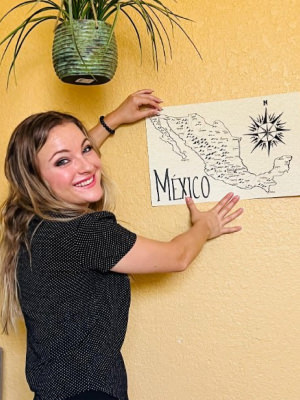 |
I just recently began collecting maps, and I was so excited to find In this photo I am hanging it up for the first time as a way to |
